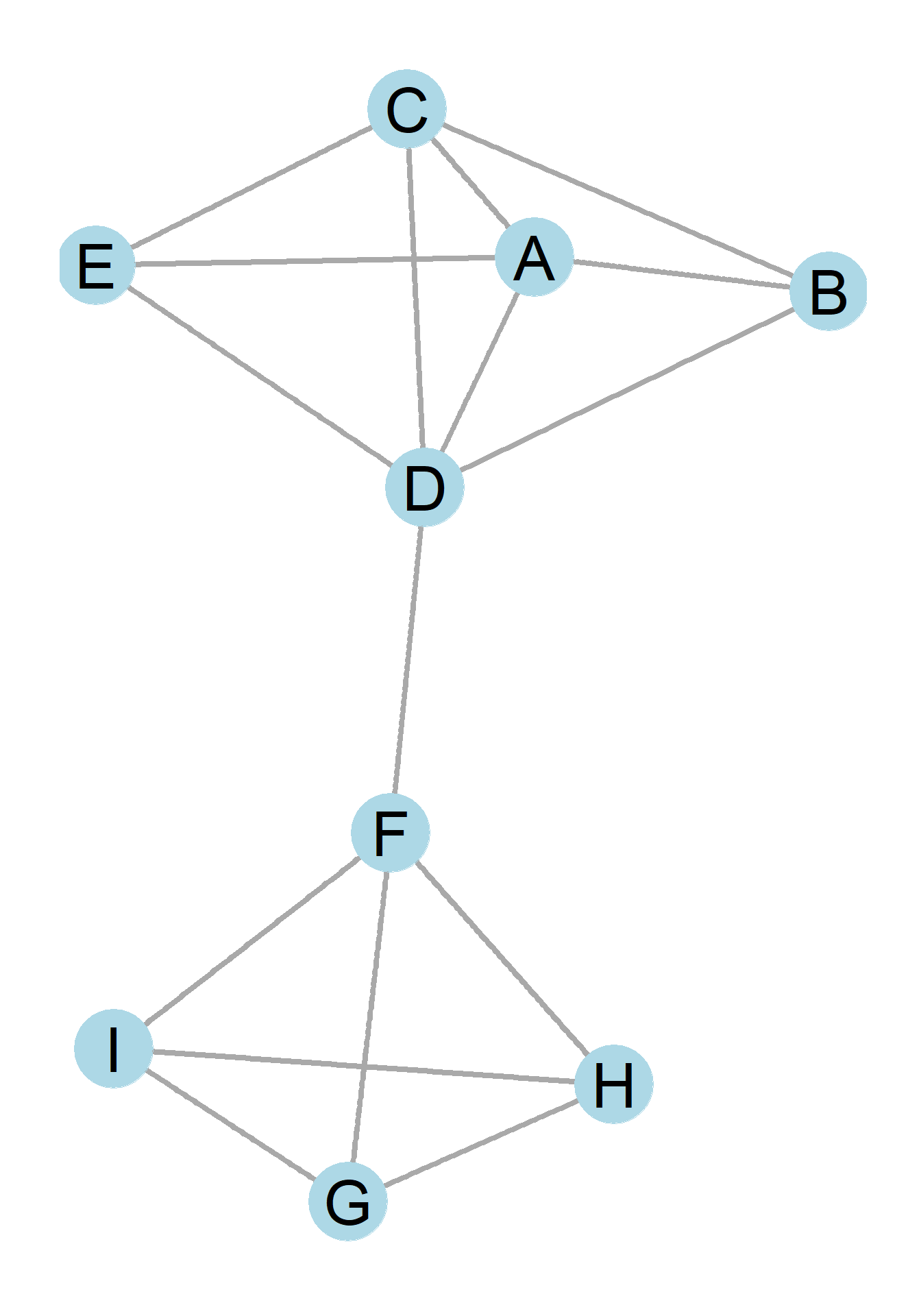2.3 Symmetric Relations and Undirected Graphs
While nodes and edges are the building blocks of a graph, the types of relationships that the edges represent can change both how we understand the network conceptually and also what mathematical techniques we can apply to the graph. Social networks composed of symmetric ties are represented using undirected graphs. An example of an undirected graph is shown in Figure 0.9.
 Figure 0.9: A undirected graph
Figure 0.9: A undirected graph
Let us assume that Figure 0.9 represents a network of people who spend time together. One way of building this network would be to ask people on your dorm room floor who are the people that they spend some amount of time (e.g., more than an hour a week) hanging out with. By definition the relation “spending time together” lacks any inherent directionality. Mutuality (or reciprocity) is built in by construction. It would be nonsensical for a person (say A) to claim that they spend time with another person (say B) and for B to say that they do not spend time with A. In terms of network theory, this means that if we know that the relationship (R) linking two nodes A and B is symmetric, then only a single edge exists that links them, and it does not matter whether we call this edge AB or BA.
Two people being in the same place at the same time (co-location), even if they do not one another, is also a symmetric tie. You also have the symmetric tie “being in the same class as”" every other student that is also taking your Social Networks seminar this term. Note that, in this sense, all co-memberships (e.g., being in the same club or organization or being part of the same family) create symmetric ties among all actors involved (we will revisit this topic when talking about two-mode networks in a later chapter). If I am a family member, you are also my family member; if we are both members of the soccer club, we are considered teammates.
Can you think of other examples of symmetric ties? Is friendship, as culturally defined in the contemporary world, a symmetric tie?